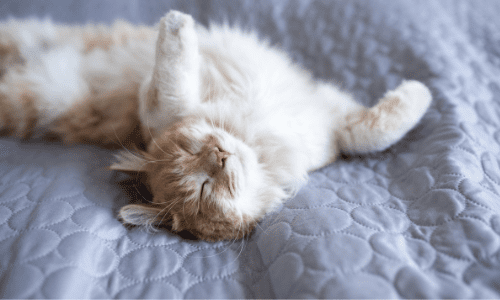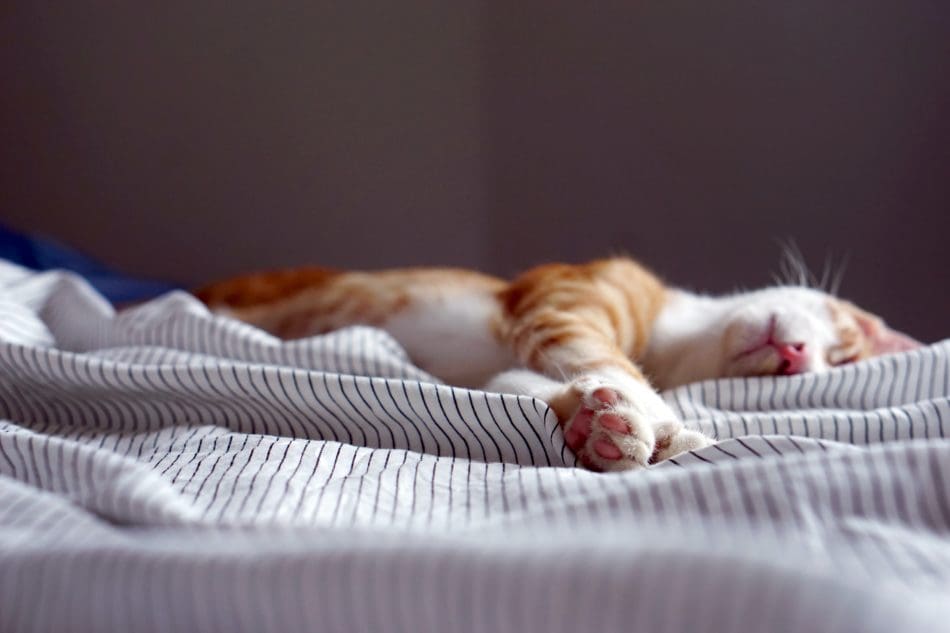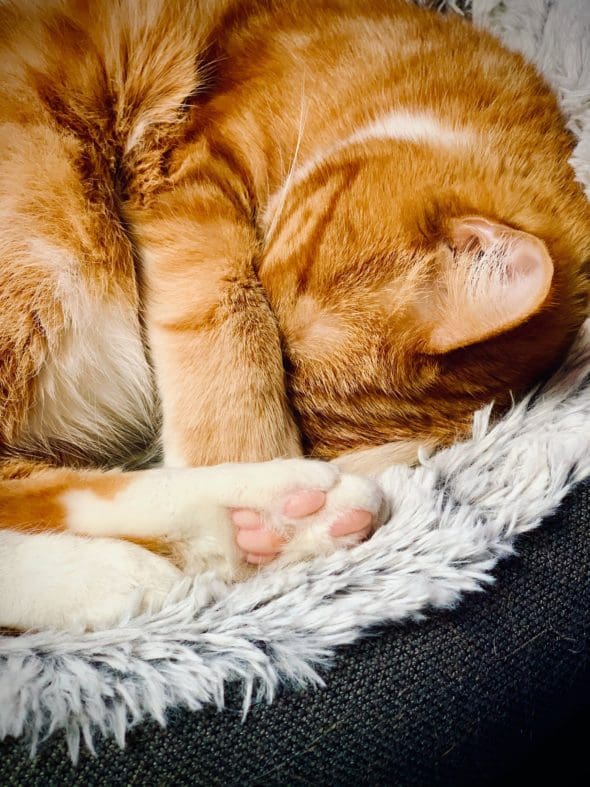[ad_1]

Who can resist the cuteness of a sleeping cat? Watching a cat who is sound asleep can bring such peace and calm, no matter what chaos may be happening around you, or whatever chaos that very cat may have created moments before.
Cats often look extremely comfortable while sleeping, but there are times when it’s baffling to imagine how they could possibly manage to relax in that scrunched position or while perilously perched atop a narrow object. Have you been curious about what some sleeping positions might indicate, or why a cat chooses a particular place to nap?
When looking at sleeping postures, you’ll need to consider the cat’s normal disposition, as well as the circumstances and environment, but here are some general interpretations.
1. Curled up in a Ball
This is likely the position you often see when it comes to cat naps. The cat curls into a ball with the tail wrapped around the body. This position is helpful in conserving heat and is the sleeping position seen frequently when temperatures drop. This posture is also protective, as it provides safety for vulnerable vital organs. Being curled up lets the cat appear small. A cat sleeping outdoors is at risk of potential ambush so it’s important to go unnoticed.

Photo by Himanshu Choudhary on Unsplash
For an indoor cat, this popular position may be an indication they would like to remain undisturbed. Depending on the indoor temperature, it could also be a sign the cat is just trying to stay warm.
2. Belly up
Stretched out with the abdomen in full view typically says the cat is totally relaxed and doesn’t feel vulnerable. This position exposes the vital organs so it’s a sign of trust and security.
In this position, the cat should be able to relax and not be startled by an approaching family member who is unable to resist the urge to pet that soft tummy. Although some cats tolerate and may even enjoy belly rubs (most don’t though), it’s not a good idea to startle your sleeping cat and possibly trigger a defensive reaction. You’ll also potentially damage the trust you worked hard to establish.

Photo: Canva
3. Meatloaf
Cats in this position resemble a meatloaf. This is also referred to as the loaf position, perhaps because it resembles a load of bread.
In this position, the cat rests with front legs folded under the chest. This a common posture for light catnaps so the cat can be ready to spring into action if needed. There’s a modified meatloaf posture as well, where the front limbs aren’t folded, but just perched under the chest. This allows the cat to react even more quickly.
4. Sideways Sleeper
As with the belly up position, this posture usually indicates the cat feels secure enough to be in a vulnerable position. The vital organs are not as exposed but are still somewhat unprotected. A cat in a side sleeper position is probably in a deep sleep.

Photo by Lauren Kay on Unsplash
This position can also be related to the current temperature in the environment. The cat may be trying to stay cool by stretching out.
5. Eyes Barely Closed
Have you ever been concerned about your safety or needed to stay aware of your surroundings while trying to fall asleep? Maybe you’ve had to sleep with one eye open, so to speak. A cat is all too familiar with that situation. The cat’s eyes may be just slightly open or there will be one open and one closed. This is not a deep sleep position, but more of a resting, light cat nap.
In this position, the cat is keeping tabs on potential activity in the environment, such as the opportunity to pounce on prey or the need to escape a sudden threat. You may notice the eyes open periodically and then slowly close again, or maybe you’ll see some accompanying ear movement.
This position lets the cat get some rest while remaining on guard.
6. Paw Over the Face
The cat is probably in a deeper sleep and doesn’t want to be disturbed. The paw covering the face may be for a little extra protection. It may be the cat’s version of a sleep mask.

Photo by Ray Mon on Unsplash
7. Dangling Legs
If the cat is sleeping on an elevated location with one or more limbs dangling, it’s likely an indication of total relaxation and feeling safe. Being on the elevated spot may create a feeling of security, which leads to relaxation.
If the cat is on a cat tree perch with limbs hanging down, make sure the reason isn’t because the perch is too small. During in-home consultations, I’ve seen very large cats trying to position themselves on perches that were way too small.
8. Yoga Master
The cat’s extremely flexible spine comes into play in many sleeping positions. This twisted torso position seems impossible to imagine as comfortable, but a cat always makes it look easy and relaxing.
[ad_2]
Source by [author_name]



